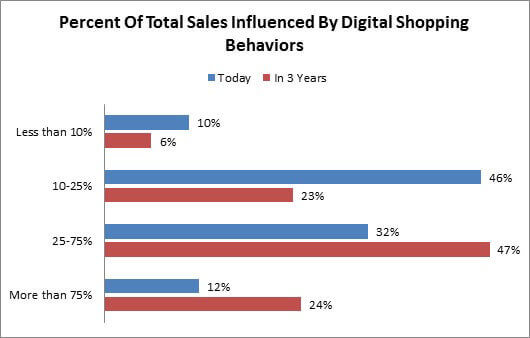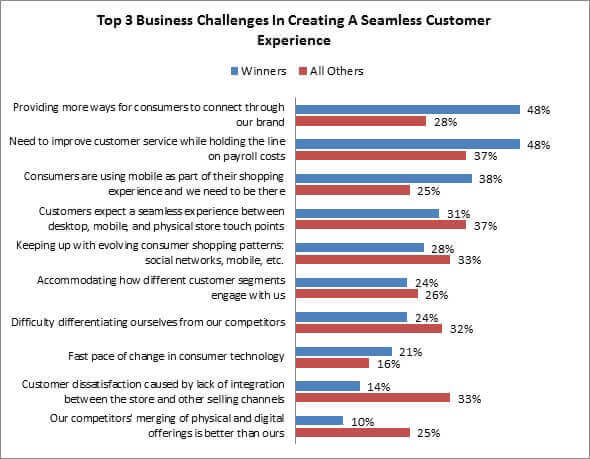Getting Realistic About Digital And Stores
When it comes to the things that challenge retailers the most, there can be no denying the elephant in the room: the trend for consumers to self-rely on digital devices to find the best products, know the most about them, and reveal the best price/most convenient delivery method is only going to increase. Note the figure below, which comes from our most recent survey, Closing The Gap Between Online And In-Store (Figure 1).
Figure 1: A Digital Horizon

Source: RSR Research, June 2015
In fact, we think the data in the above in Figure about digital usage today reveals a serious underestimation on retailers’ behalf. Numerous consumer studies have shown that upwards of 50% of sales are currently influenced by digital shopping behaviors. Just think: when was the last time you purchased any non-grocery item that didn’t involve some type of digital interaction? And knowing what you’ve experienced in the evolution of your own shopping behaviors in recent years, how do you imagine that will evolve a full three years from now? Either way, even if these numbers are a bit soft (or coming from a store-centric frame of mind), at least 71% of retailers recognize that come a short 36 months from today, 25% or more of their overall sales will be influenced by digital shopping behaviors. That is a significant challenge. Yet as it relates to dealing with this challenge, Retail Winners believe they at least know what needs to be addressed at a much greater rate than their competitors (Figure 2, below).
Figure 2: Winners Show Their Hand

Source: RSR Research, June 2015
Winners know that in order to create a truly seamless experience, connection to the brand is a tremendous part of the equation. It’s not enough to merely align disjointed touch points to offer a unified “feeling ” among shoppers wherever/however they choose to engage: Winners know that creating fresh new modes of interactivity and connection are going to be required to make the customer view the brand as an actual part of their life. That “feeling ” needs to be more than consistent; it needs to be elevated. The best brands are hard at work trying to find creative ways to do that very thing for tomorrow.
However, one of the fastest ways to occupy the part of the consumer’s brain that retailers want to occupy most – where brand and emotion become associative and inseparable – is to establish human connection. Clever uses of social media, call center, and online widgets can help in finding ways to add a human experience to an otherwise solitary technological endeavor. But when it comes to this “actual human interaction ” component of the shopping experience, there will never be a substitute for in-store person-to-person interaction. It’s a functional need of the human condition, and a large part of why stores have yet to (and won’t) disappear.
If you’d like to read the full report, it is available by following this link.
